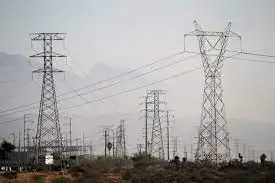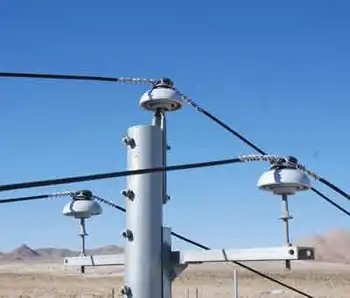Renewable Energy Plan Meets Utility Resistance
TULSA, Oklahoma -- - Wind power advocates are making a second attempt to establish renewable-energy standards for the electric utilities in Oklahoma.
Senate Joint Resolution 8, which is pending before the Senate, encourages electric utilities to provide a certain percentage of power made from renewable forms of energy such as wind and solar.
The standards, which would increase each year, would be voluntary, said Charles Ward, a member of the Oklahoma Renewable Energy Foundation, the group backing the proposal.
"We're just trying to get wind power development" in Oklahoma, Ward said.
A proposal that contained mandatory standards was killed in committee last year after some last-minute lobbying by utilities, Ward said.
Public Service Company of Oklahoma, a subsidiary of American Electric Power, opposes the measure. PSO is the state's second-largest electric utility, serving 478,000 customers.
"The concern is that what is currently voluntary could at some point be made mandatory," said PSO spokesman Ed Bettinger.
The standards, if forced, could create higher costs for PSO and its customers, Bettinger said.
"In order to protect prices, we're opposed to the current language in the bill," he said.
Oklahoma Gas & Electric Co., the state's top power provider, also opposes the measure, saying it would set specific standards without regard to the level of consumer demand.
"We don't oppose the intent of SJR8. We're very supportive of renewables," said Paul Renfrow, a spokesman for OG&E. The amount of renewable power a utility purchases should be based on demand, not supply, because renewable power costs more than conventional supplies, he said.
"We do believe there is a place for renewables. We do believe some of our customers will want it," Renfrow said. "But we don't really know how many people will really be interested in it."
The resolution calls on each utility to voluntarily acquire 1 percent of its power from renewable sources by next Jan. 1. Each year, the percentage would rise until it reaches eight per cent in January 2011.
"That's the wrong approach," Renfrow said.
OG&E would have to provide 480 megawatts of renewable power by 2011 based on its current load, which is 6,000 megawatts.
OG&E, which serves 700,000 Oklahoma customers, has plans to offer wind-generated electricity to some of its customers next year. Under its new rate plan, the utility can purchase up to 50 megawatts of wind power for its customers. A request for bids is to be issued next week.
Oklahoma is ranked eighth nationally in wind power potential, according to the American Wind Energy Association. In some parts of the state, the average wind speed at more than 160 feet in the air is 16 mph, strong enough to turn the tall turbines of a large-scale wind farm.
Last month, Blue Canyon Windpower LLC of Wichita Falls, Texas, announced plans to build a 64-megawatt wind farm north of Lawton. The project, which calls for the construction of 39 wind turbines, is expected to be completed by the end of the year.
All of that power will be purchased by Western Farmers Electric Cooperative, which supplies electricity to 19 rural cooperatives in Oklahoma under a 20-year contract.
US wind power capacity increased 10 per cent last year, as 410 megawatts of new generation went online, AWEA said. Wind power capacity totaled 4,685 megawatts at the end of 2002, enough to power 1.3 million homes.
Related News

Brazil tax strategy to bring down fuel, electricity prices seen having limited effects
BRASILIA - Brazil’s congress approved a bill that limits the ICMS tax rate that state governments can charge on fuels, natural gas, electricity, communications, and public transportation.
Local lawyers told BNamericas that the measure may reduce fuel and power prices in the short term but it is unlikely to produce any major effects in the medium and long term.
In most states the ceiling was set at 17% or 18% and the federal government will pay compensation to the states for lost tax revenue until December 31, via reduced payments on debts that states owe the federal government.
The bill will become law…




